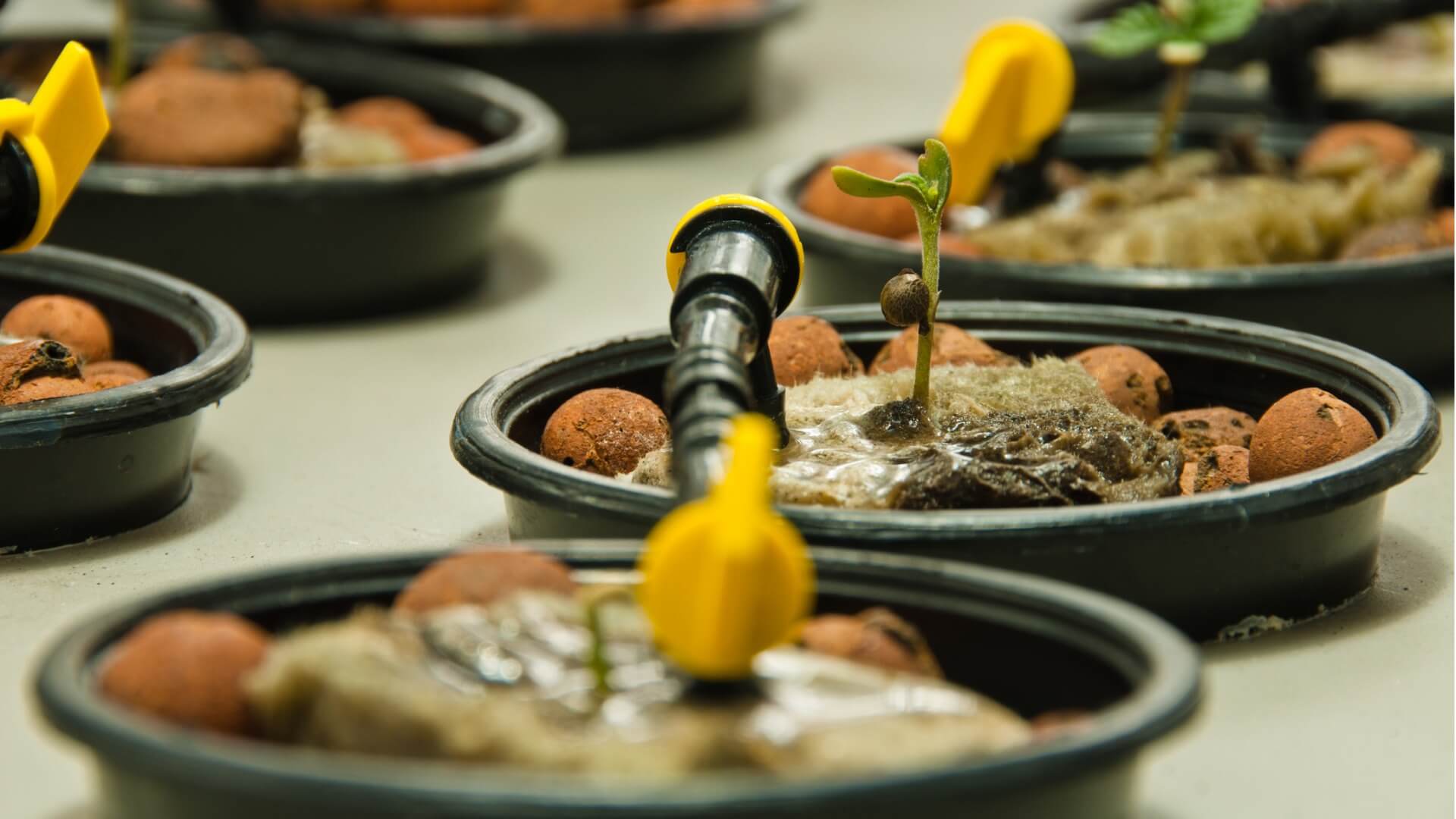Is there a difference at all?

Hydroponic marijuana refers to cannabis plants grown with their roots in constant contact with water. There are several types of hydroponic systems that usually include another soil-less medium such as rockwool, coco coir, vermiculite, peat moss, and/or perlite.
A lack of research on the topic makes it impossible to definitively rank hydroponic over soil-grown cannabis in terms of potency or safety. The visible benefits of hydroponics are more relevant to the producer than the consumer and include the ability to rigidly control the growing environment and produce uniform plants.
These are some of the most common types of hydroponic systems:
- Aeroponic systems spray suspended roots with nutrient-dense water.
- Deep water culture systems use bubblers, containers filled with air, nutrients, and water to speed up grow time.
- Drip irrigation systems feed individual plants a nutrient-rich water solution through a dripper.
- Nutrient film systems pump a nutrient-rich solution into a shallow tray the plant roots directly grow into.
Hydroponic Marijuana Provides a Highly Controlled Growing Medium

The ability to regiment the growing environment allows producers to control for quality in ways that aren’t intuitively possible in the unpredictability of soil and outdoor conditions.
Because hydroponics grows are kept indoors, inclement weather, too little or too much light, heat, and humidity, and pests do not carry the same level of risk as they do for outdoor growers. Additionally, a well-kept hydroponics system is less vulnerable to disease-causing pathogens and nutrient issues since every aspect of the growing medium is in the grower’s power to control.
For commercial producers, this translates into much more predictability and uniformity in the product being cultivated.
Another advantage to hydroponic systems is true for all indoor grows, and that is the benefit of greater privacy. These grows are less vulnerable to theft, meddling, and invasion by large animals such as deer. Indoor grows are also safer from federal intrusion; as long as cannabis remains federally prohibited, all cannabis activity is subject to federal prosecution despite state laws.
For home growers, this is a benefit of compliance since all states that allow residents to grow their own cannabis require that it be done in a secure location hidden from public view.
The Risks of Hydroponic Marijuana
Despite these benefits, hydroponic marijuana comes with its own set of risks including the use of dangerous chemicals, algae, and a costly and steep learning curve.
A 2018 Drug and Alcohol Dependence study surveyed 1,722 cannabis growers operating in Australia, Denmark, and the United Kingdom to determine how often producers included harmful chemical additives as a part of their growing practice.
The results of the study showed that 44 percent of survey participants indicated using chemicals, and the single predictor of chemical use was growing hydroponically. This study does not conclude that hydroponic marijuana is inherently worse than marijuana grown in different mediums.
However, its results suggest that there is a potentially dangerous trend toward harmful chemical use in hydroponic practice.
Hydroponic marijuana can be grown organically, but proper execution is exceedingly difficult to master. Growers can turn to aquaponics or bioponics to convert waste into nutrients. Aquaponics uses fish and fish waste to feed cannabis while bioponics relies on helpful bacteria to process waste matter into plant food.
These simplified summaries of the two practices do not adequately capture the complexity that goes into each type of system. In both cases, it is very easy for the management of the fish or the bacteria to quickly become the problem rather than the solution.
The difficulty of growing organic hydroponic marijuana has resulted in the pervasive use of heavy metal-based fertilizers. While the Association of American Plant Food Control Officials (AAPFCO) allows for a limited amount of these heavy metals in plants, amounts exceeding these limits can be dangerous for human consumption.
Since cannabis is not regulated by the federal government, it isn’t clear that producers are adhering to federal guidelines in their hydroponic marijuana practice. Another challenge in hydroponics is preventing or removing algae from a hydroponic system.
While it is possible for algae to grow in overly moist soil, the issue is a much more common and damaging in hydroponics. If the algae problem becomes too widespread, it can destroy an entire hydroponics marijuana crop. In these cases, a grower’s best shot at totally eliminating the algae growth is by disassembling the entire system and giving each component a deep clean.
The cost of the time and cannabis lost to this threat is steep. Finally, it takes time to become a master hydroponic grower. Sure, there are benefits to creating a rigidly controlled growing medium through hydroponics—as long as the medium contains the right nutrients at the right pH level for the right cannabis strains in the right equipment (of which, there can be a lot).
While soil can be enhanced with gentle biosolids like manure or worm castings, hydroponic solutions must be infused with synthetic nutrients that, if applied too liberally, can damage the plants to the point of fatality.
On the other hand, because hydroponic solutions cannot rely on the rich microbial life housed in healthy soil, it is important for hydroponic growers to regularly maintain nutrient levels in their solutions to avoid nutrient deficiencies. Novice or very busy growers are encouraged to use soil before dabbling in hydroponics because of the latter’s high maintenance requirements.

